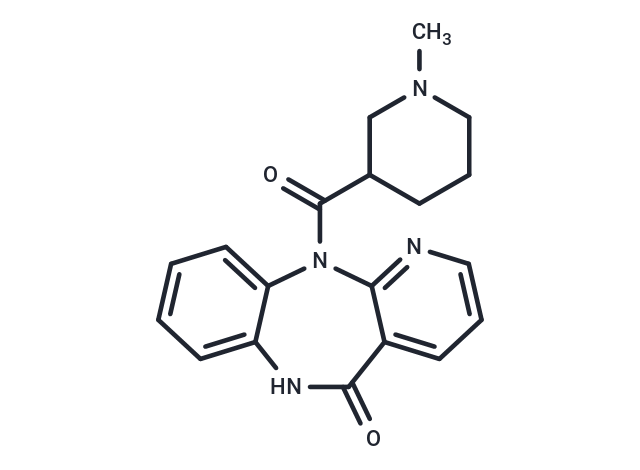Shopping Cart
- Remove All
 Your shopping cart is currently empty
Your shopping cart is currently empty

Rispenzepine is a novel antagonist of muscarinic acetylcholine receptors (mAChRs), selectively targeting the M1 and M3 receptor subtypes, and can be used in the treatment of immune system disorders, infections, and respiratory diseases.

| Pack Size | Price | Availability | Quantity |
|---|---|---|---|
| 25 mg | $1,520 | 6-8 weeks | |
| 50 mg | $1,980 | 6-8 weeks | |
| 100 mg | $2,500 | 6-8 weeks |
| Description | Rispenzepine is a novel antagonist of muscarinic acetylcholine receptors (mAChRs), selectively targeting the M1 and M3 receptor subtypes, and can be used in the treatment of immune system disorders, infections, and respiratory diseases. |
| In vitro | Rispenzepine almost fullly inhibits cholinergic, contractile responses at 0.3 μM (92.7±6.2% inhibition, n=6, p<0.05; pD2 value of 7.31±0.15). The M1, M1/M3, or M3 antagonists inhibit the EFS-evoked cholinergic contractile response in a concentration-dependent manner (4-DAMP > Rispenzepine > Pirenzepine), whereas Methoctramine facilitates this response at low concentrations (<3 μM). The presence of muscarinic autoreceptors in human and guinea pig trachea is investigated by comparing the effects of the muscarinic receptor antagonists Pirenzepine (M1), Methoctramine (M2), 4-DAMP (M3), and Rispenzepine (M1/M3) on cholinergic neural contractile responses evoked by electrical field stimulation (EFS) and [3H]ACh release. In ACh release studies, the M3 antagonist has no significant effect, whereas Pirenzepine, Methoctramine, and Rispenzepine significantly increase ACh release in guinea pig trachea [1]. |
| Molecular Weight | 336.39 |
| Formula | C19H20N4O2 |
| Cas No. | 96449-05-7 |
| Relative Density. | no data available |
| Storage | Powder: -20°C for 3 years | In solvent: -80°C for 1 year | Shipping with blue ice. |

Copyright © 2015-2025 TargetMol Chemicals Inc. All Rights Reserved.